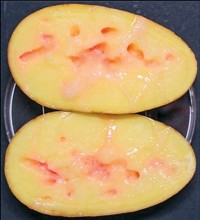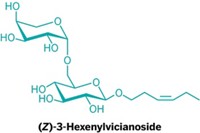Advertisement
Grab your lab coat. Let's get started
Welcome!
Welcome!
Create an account below to get 6 C&EN articles per month, receive newsletters and more - all free.
It seems this is your first time logging in online. Please enter the following information to continue.
As an ACS member you automatically get access to this site. All we need is few more details to create your reading experience.
Not you? Sign in with a different account.
Not you? Sign in with a different account.
ERROR 1
ERROR 1
ERROR 2
ERROR 2
ERROR 2
ERROR 2
ERROR 2
Password and Confirm password must match.
If you have an ACS member number, please enter it here so we can link this account to your membership. (optional)
ERROR 2
ACS values your privacy. By submitting your information, you are gaining access to C&EN and subscribing to our weekly newsletter. We use the information you provide to make your reading experience better, and we will never sell your data to third party members.
Biological Chemistry
Chemical Weapon For Plants Unsheathed
The war between plants and infectious microbes uncovers sulforaphane as a natural plant-defense chemical
by Sarah Everts
March 7, 2011
| A version of this story appeared in
Volume 89, Issue 10
Scientists studying the wars waged between plants and infectious microbes have discovered a new plant-defense chemical. While monitoring Arabidopsis plants under attack by Pseudomonas syringae pathogenic bacteria, a team led by Jun Fan of the John Innes Centre, in Norwich, England, and Peter Doerner of the Institute of Molecular Plant Sciences at the University of Edinburgh, in Scotland, discovered that the plants produce sulforaphane (4-methylsulfinylbutyl isothiocyanate) by breaking down aliphatic glucosinolates (Science, DOI: 10.1126/science.1199707). Sulforaphane helps slow or stop the pathogen’s growth, but only when the pathogen is missing sax genes; sax stands for “survival on Arabidopsis extracts.” How the proteins coded by these genes deactivate the plant’s defense weaponry is still unknown, but one of the proteins is similar to β-lactamase, an enzyme known to deactivate antibiotics; thus, it possibly chops up sulforaphane. The team also found that pathogens of cruciferous vegetables such as cabbage and broccoli have genes that are resistant to the sulforaphane weapon, whereas noncruciferous pathogens are more vulnerable to the plant-defense chemical. Blocking the action of the sax genes could be one route to staving off pathogens of green leafy vegetables in the future, the researchers suggest.





Join the conversation
Contact the reporter
Submit a Letter to the Editor for publication
Engage with us on Twitter